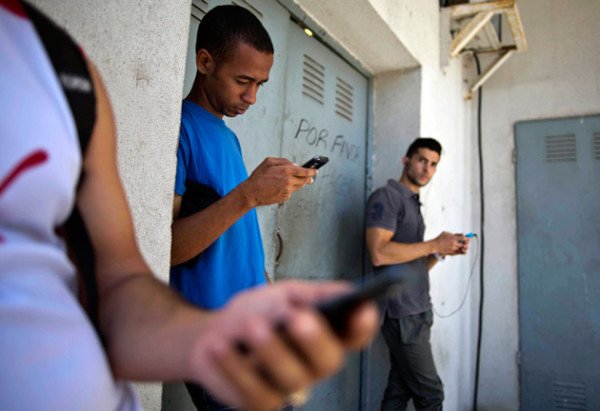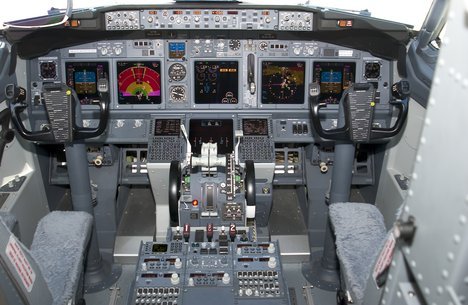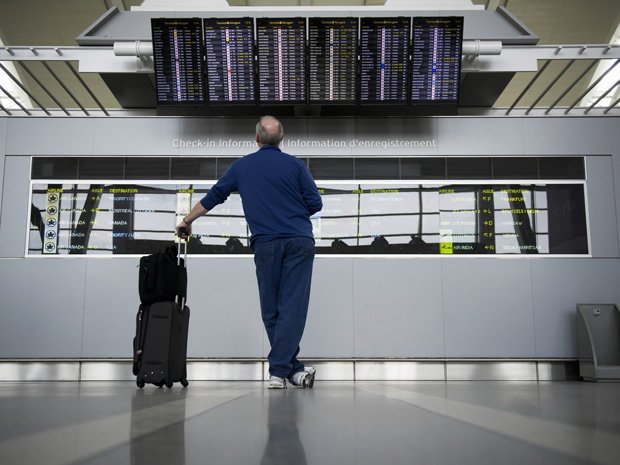Home Tags Posts tagged with "wi fi"
wi fi
The Cuban government has granted approval to contemporary artist Kcho to open the country’s first public wireless hub at his cultural center.
Kcho, who has close ties to the Cuban government, is operating the hub using his own, government-approved internet connection, and paying approximately $900 per month to run it.
Only an estimated 5% – 25% of Cubans have any type of internet service.
That is because internet access is incredibly expensive.
For instance, an hour of internet access at a cafe can cost $4.50 – nearly a week’s wages for the average Cuban.
Kcho told the Associated Press he decided to offer free internet at the centre, which opened in western Havana in January, in order to encourage Cubans to familiarize themselves with the internet.

Photo AP
The Cuban government has expressed a keen desire to upgrade its dilapidated or non-existent telecommunications infrastructure.
Although Cuba’s connectivity to the internet was greatly expanded with the completion of an undersea cable between the island and Venezuela in January 2013, the country still has some of the lowest internet connectivity rates in the world.
On January 15, the US announced new rules that ease long-running sanctions against Cuba. A trade embargo has been in place since 1962.
A key part of that decision by the Obama administration was a stated desire to help boost telecommunications on the island.
Last week, Cuba’s state telecom agency Etecsa said it had established a direct telephone connection between the US and Cuba for the first time in 15 years, as relations between the two countries continue to thaw.
[youtube Z46i2ELBOk4 650]
[youtube 8Anp_4U0lsc 650]
The Federal Aviation Administration (FAA) has ordered airlines to replace or modify the cockpit display units fitted to hundreds of Boeing jets.
The US air safety regulator said that tests had indicated that mobile phone and computer signals could cause the screens to go blank.
The affected planes are typically fitted with several screens, each of which costs thousands of pounds.
Honeywell – the displays’ manufacturer – has stressed that the problem has not been experienced in-flight.
“The only known occurrence was during a developmental test conducted on the ground,” said spokesman Steve Brecken.
“We worked with Boeing and addressed any concerns in 2012 with new display hardware.”
Boeing had previously issued an alert in November 2012 after an aero plane operator and Wi-Fi vendor noticed interference caused by the installation of an in-flight internet system.
The “phase 3” display units were found to be susceptible to the same radio frequencies used to transmit data via Wi-Fi.

The FAA has ordered airlines to replace or modify the cockpit display units fitted to hundreds of Boeing jets
In addition, the FAA said it was concerned that the screens could be disrupted by mobile satellite communications, cellular signals from phones, and air surveillance and weather radar.
The watchdog noted that the displays were required to provide pilots with information about airspeed, altitude, heading and pitch and roll, and added that the fault could cause a crash.
“We are issuing this AD [airworthiness directive] to prevent loss of flight-critical information displayed to the flight crew during a critical phase of flight, such as an approach or take-off, which could result in loss of airplane control at an altitude insufficient for recovery, or controlled flight into terrain,” it said.
Planemaker Boeing said that it had recommended that carriers implement the changes back in 2012.
However, the FAA said that it had estimated that a total of 1,326 Boeing 737 and 777 jets still needed to make the change.
It estimated that the replacement program would cost about $13.8m (£8.5m) to implement.
The agency noted that Virgin Australia, Air France, Ryanair and Honeywell were among those that had opposed the new rules on the grounds that they did not believe either current in-flight Wi-Fi systems or passengers’ electronic devices emitted signals at a strong enough level to affect equipment on the flight deck.
The FAA said Ryanair had complained that the demands imposed “a high, and unnecessary, financial burden on operators”.
Honeywell had suggested that airlines should be forced to install new screens only if Wi-Fi enabled tablets or other such equipment were used in the cockpit.
However, the FAA rejected these complaints saying it wanted to “eliminate” any risk of interference.
“We do not agree that no problems have occurred on in-service airplanes, since the Wi-Fi… testing that disclosed this susceptibility was conducted on an in-service airplane fitted with phase 3 display units,” it added.
The FAA has given the companies involved five years to swap or modify the components.
Experts said the public should not be alarmed.
Just a few decades ago dial-up was the norm and broadband was practically nonexistent.
Today five megabit per second connections are the normal minimum almost everywhere with faster connections available in many areas. Infrastructure continues to be improved and speeds get faster every day. Xfinity high speed Internet is among the fastest available. But how fast can Internet connections become and why should we care?
Whatever the maximum speed of Internet connections is, it is very fast. Gigabit connections are being rolled out in some areas as the infrastructure is upgraded, with promises of even faster speeds in the future. This is 50 times faster than the average US speed. When these connections become ubiquitous the Internet will become a very different place. Just as today’s Internet is much more powerful than the dial-up systems of the past, the future Internet will be useful in new and unimaginable ways.
There is a difference between advertised speeds and actual speeds, which is worth noting when talking about what users actually experience.

Infrastructure continues to be improved and Internet speeds get faster every day
One major improvement caused by faster connections is media formats. As the Internet has become faster audio and video has become better to take advantage of it. Low quality tiny videos have been replaced by full HD. Movies have become digitized and are becoming better as well. And more companies have been taking advantage of the Internet to sell media. Cable connections are being replaced by video on demand services that are often more convenient and cheaper.
Video chat, once the realm of science fiction, has become ubiquitous as the Internet has improved. Today it is often blocky and prone to stuttering. Even higher Internet speeds will change that by providing more space to send the video data. This may lead to video chat becoming the standard, taking over regular telephone conversations (or has texting already done that?).
Improvements in video chat may also lead to changes in other parts of life. For example distance learning can become a mainstream method of teaching. When all the students are able to have high quality video links it’s easy to simulate the classroom environment over the Internet. Universities are already starting to experiment with distance learning courses and they can only become more integral over time.
Public services can also greatly benefit from better video chat. Police and fire officials can send multimedia between themselves, each other, and headquarters. A fleeing suspect can be monitored in real-time with the video being transmitted to the appropriate people. Officers can quickly get detailed information about a house that they’re searching or a suspect that they’re detaining.
Video games will also benefit from increased connection speeds. Broadband has already enabled Internet multiplayer games as the connections have become good enough to keep all the players synchronized with each other. Future speeds will allow multiplayer gaming to improve further.
Another possibility is more interaction with the real world. For instance, traffic lights can be connected to a municipal Wi-Fi network. Their light change schedules can be altered if traffic or an emergency dictates it depending on a flow of information equal to the road traffic. Roadside signs can also be connected to the Internet to provide up to the minute information.
Better Internet connections will mean that relatively slower connections will become easier to get and cheaper, making them more often used (if they’re not phased out).
Improving Internet infrastructure will provide very fast connection speeds to even the rural parts of the US. Connecting the entire US will help rural areas by linking them to the economic growth the Internet offers. Businesses can expand their local markets. People and business can get specialized services from distant areas where the appropriate business is located.
The Internet has gotten much faster since its inception and it will likely become much faster in the future. As it becomes an increasingly large part of society the faster connection speeds will make everyone more connected. This will benefit society as information can travel more quickly and people can always be in contact with each other.
Canada’s electronic spy agency, Communications Security Establishment Canada (CSEC), collected data from travelers passing through a major airport, the CBC reports.
The CSEC collected information captured from unsuspecting passengers’ wireless devices by the airport’s free Wi-Fi system over two-weeks, the report says.
The revelations come from documents leaked by Edward Snowden, CBC says.
The CSEC is prohibited by law from targeting Canadians or anyone in Canada without an appropriate warrant.
Its primary mission is to collect foreign intelligence by intercepting overseas phone and internet traffic.
The CSEC, in a statement to CBC, reiterated that it is “mandated to collect foreign signals to protect Canada and Canadians.
“And in order to fulfill that key foreign intelligence role for the country, CSEC is legally authorized to collect and analyze metadata.”

Canada’s electronic spy agency collected data from travelers passing through a major airport
Metadata is the information about a communication – such as the date and location of a call or email – rather than the details of what was actually said or written.
The leaked document indicates the 2012 passenger tracking operation was a trial run of a powerful new software program being developed jointly with the National Security Agency (NSA), CBC reports.
It is now fully operational, CBC News quotes sources as saying.
Experts told the broadcaster that information captured from travelers’ devices would have enabled the agency to track them for a week or more as they showed up in other Wi-Fi “hot spots” around Canada, such as other airports, hotels or restaurants.
Such was the volume of data that CSEC could even track the travelers’ movements back to the days before they arrived at the airport, the experts say.
The document does not specify which airport was targeted or explain how CSEC was able to access the data.
Two airports – Vancouver and Toronto – and Boingo, an independent supplier of Wi-Fi services at other Canadian airports, have denied any involvement in supplying Wi-Fi information.
Former NSA contractor Edward Snowden is currently living in Russia having fled the US in May 2013 after leaking thousands of documents that revealed extensive internet and phone surveillance by the US and other intelligence services.
[youtube V9FzWaHFDoQ 650]
Giant planemaker Boeing used an unusual substitute for passengers to test its in-flight wi-fi system – potatoes.
Passenger seats on a decommissioned plane were loaded with huge sacks of the tubers for several days as signal strengths were checked.
Boeing’s researchers say that potatoes “interact” with electronic signals in a similar way to humans.
The technique also took advantage of the fact that spuds – unlike humans – never get bored.
Boeing’s engineers did a number of tests to ensure that passengers would get the strongest possible wi-fi signal while in the air, all while meeting safety standards that protect against interference with an aircraft’s electrical systems.
Wireless signals fluctuate randomly in the enclosed space of an aeroplane cabin as people move about.
This means that signal distribution is uneven throughout the cabin, with weaker and stronger connectivity in different seats.

Boeing used potatoes as substitute for passengers to test its in-flight Wi-Fi system
“You want your laptop to work anywhere it’s located on your seat, [but] there can be significant signal changes just due to the location of the laptop,” said Boeing engineer Dennis Lewis.
To test the signal distribution, the firm turned to spuds instead of human test subjects, filling the seats with 20,000 lbs (9,000 kg) of potatoes in sacks.
According to Boeing, potatoes’ “interactions” with electronic signals mimic those of a human body, making them “the perfect stand-in for people who would otherwise have had to sit motionless for days while the data was gathered”.
The UK Potato Council said many people underestimated the humble potato’s alternative uses.
“[The examples are] in paper and ink manufacturing, potato starch is used in clothing to strengthen the fibres so they don’t break during weaving, and for sweetening – glucose can be extracted from potato starch,” said the council’s spokeswoman.
“For beauty and sores – potatoes have calming, decongestant and astringent properties and raw potatoes can calm tired eyes, potato as alcohol, and potatoes can produce electricity.”
Frederic Rosseneu of the European Potato Trade Association Europatat said the organization was “looking forward to other experiments in which spuds can help to make our lives more convenient”.
[youtube uo_zV-8nC-s]





